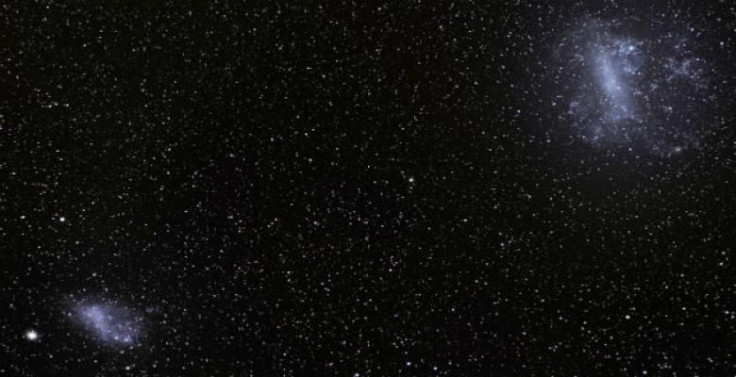Scientists Amazed To Find Dwarf Galaxies Intact, Discover A Cosmic Shield Protecting Them
KEY POINTS
- The two dwarf galaxies are the Large and Small Magellanic Clouds
- They are the nearest massive satellite galaxies of the Milky Way
- The dual galaxy system is enveloped by a corona, a protective shield of hot supercharged gas
The intactness of a couple of dwarf galaxies had been puzzling the scientists for a while until a recent discovery confirmed the presence of a protective shield surrounding the two galaxies.
The discovery was made while scientists were scouring through data from the Hubble telescope and a retired satellite named the Far Ultraviolet Spectroscopic Explorer (FUSE), according to a paper in the journal Nature.
The two dwarf galaxies, named the Large Magellanic Cloud (LMC) and the Small Magellanic Cloud (SMC), are the nearest massive satellite galaxies of the Milky Way. They orbit one another and are on a rendezvous with the milky way, leaving behind trails of gaseous debris as they unravel.
"A lot of people were struggling to explain how these streams of material could be there," said Dhanesh Krishnarao, assistant professor at Colorado College. "If this gas was removed from these galaxies, how are they still forming stars?"
The answer is - the dual galaxy system is enveloped by a corona, a protective shield of hot supercharged gas. This corona prevents the gases from the dwarf galaxies to be lost in the milky way, allowing them to continue churning out new material for star formation.
"Galaxies envelop themselves in gaseous cocoons, which act as defensive shields against other galaxies," co-author, Andrew Fox of the Space Telescope Science Institute in Baltimore, Maryland, said.
The presence of such a corona had been previously predicted by astronomers, but there was no proof to back the hypothesis until now.
"We discovered that if we included a corona in the simulations of the Magellanic Clouds falling onto the Milky Way, we could explain the mass of extracted gas for the first time," co-author Elena D'Onghia, University of Wisconsin–Madison, commented. "We knew that the Large Magellanic Cloud should be massive enough to have a corona."
Despite stretching more than 100,000 light-years from the Magellanic clouds and covering a huge portion of the southern sky, the corona remains inconspicuous.
To detect the protective halo, scientists had their task cut out for them. They had to go through 30 years of archived data.
The corona is formed from the remnants of a primordial cloud of gas as a result of its collapse to form galaxies many many years ago, scientists believe.
Coronas have been previously observed around distant dwarf galaxies, but this recent discovery is the most detailed probe astronomers ever performed.
"There're lots of predictions from computer simulations about what they should look like, how they should interact over billions of years, but observationally we can't really test most of them because dwarf galaxies are typically just too hard to detect," Krishnarao added.
The proximity of the Magellanic Clouds provides the perfect opportunity to study the interaction between the dwarf galaxies and their evolution.

© Copyright IBTimes 2024. All rights reserved.





















